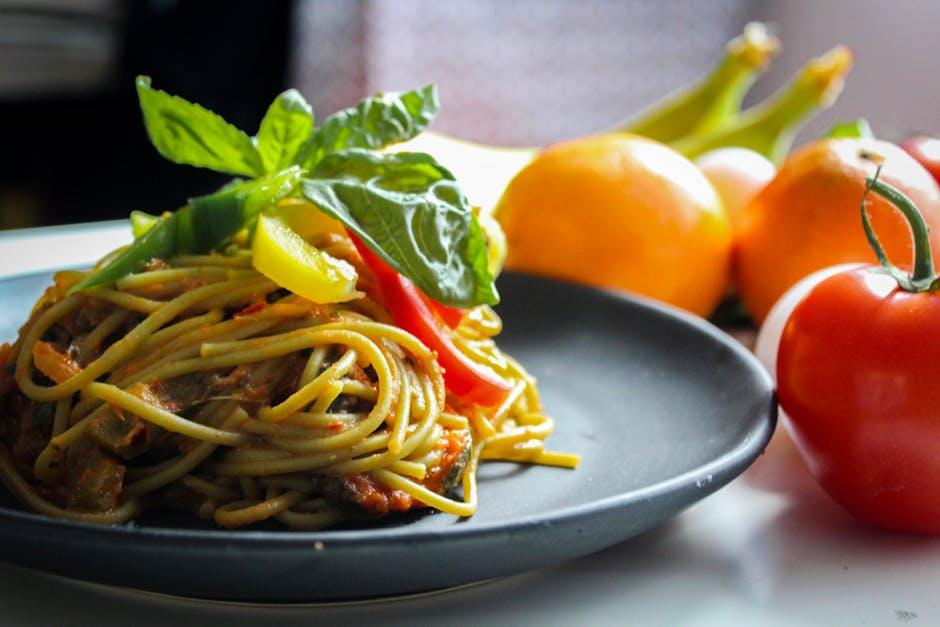The flicker of a candlelit kitchen, the sizzle of a skillet, the aroma of spices filling the air-these familiar moments often shift with the changing seasons. Weather, in its subtle and not-so-subtle ways, influences more than just our wardrobe choices or weekend plans; it also shapes what we decide to cook at home. From the crisp clarity of a winter stew to the light, fresh whispers of a summer salad, the conditions outside coax our culinary instincts, guiding our tastes and traditions. In this exploration, we’ll uncover the fascinating dance between the weather’s moods and the meals simmering in our kitchens.
Seasonal Flavors and Fresh Ingredients: Adapting Your Menu to the Climate

As the seasons change, so do the flavors and ingredients that naturally thrive in our environment, inviting us to adjust our culinary practices accordingly. Summer often beckons the vibrant hues and crisp textures of fresh berries, tomatoes, and zucchinis, perfect for light salads and chilled dishes that beat the heat. Conversely, winter encourages the embrace of hearty root vegetables, winter squash, and robust greens, which lend warmth and comfort when simmered in stews or baked into gratins. By paying attention to what’s in season, home cooks can enhance the natural taste, nutritional value, and sustainability of their meals, creating dishes that resonate with the climate’s rhythm.
Incorporating seasonal produce isn’t just about choosing ingredients; it’s about crafting a versatile menu that adapts to varying weather patterns. For example:
- Hot weather: Focus on hydration-rich fruits like watermelon and cucumbers, and fresh herbs like mint and basil for refreshing flavor.
- Cold weather: Embrace warming spices such as cinnamon and nutmeg, seasonal root vegetables, and slow-cooked meats to nourish the body.
Below is a simple guide illustrating how seasonal choices change with the climate:
| Season | Typical Ingredients | Ideal Cooking Style |
|---|---|---|
| Spring | Asparagus, peas, radishes | Light sautés, fresh salads |
| Summer | Tomatoes, berries, zucchini | Grilling, chilled soups |
| Autumn | Pumpkin, apples, kale | Roasting, hearty stews |
| Winter | Carrots, potatoes, citrus | Slow cooking, braising |
Comfort Foods for Chilly Days: Warm Recipes to Soothe and Nourish

When the temperature drops, our cravings naturally shift toward dishes that offer both warmth and comfort. Rich, hearty stews bubbling with tender meats and root vegetables become go-to meals, filling the kitchen with enticing aromas that invite lingering. The appeal lies not just in flavor, but in the way these meals envelop us in a sense of coziness, making chilly evenings feel a little less brisk. Ingredients like cinnamon, nutmeg, and cloves also make frequent appearances, infusing dishes with subtle warmth that stirs nostalgic memories of fireplaces and woolen blankets.
Popular comfort food elements in colder months include:
- Slow-cooked soups and broths
- Oven-baked casseroles and gratins
- Hearty whole grains like barley and quinoa
- Root vegetables such as carrots, parsnips, and sweet potatoes
- Warm spices and herbs
| Dish Type | Key Benefits | Typical Ingredients |
|---|---|---|
| Stews | Long cooking intensifies flavors | Beef, potatoes, carrots, herbs |
| Soups | Light but nourishing | Chicken broth, noodles, vegetables |
| Casseroles | Comforting all-in-one meals | Cheese, pasta, ground meat |
Light and Refreshing Dishes for Sunny Weather: Embracing Cooling Ingredients

When the sun is shining bright and temperatures soar, our palates often crave meals that refresh and revive rather than weigh us down. Embracing cooling ingredients not only provides relief but also invigorates our bodies with essential hydration and nutrients. Recipes featuring crisp cucumbers, zesty citrus fruits, succulent watermelon, and fresh herbs like mint and basil become staples, offering a playful medley of flavors that awaken the senses without heat or heaviness.
Incorporating these ingredients can be both simple and exciting. Salads with crunchy vegetables and light vinaigrettes, chilled soups brimming with garden-fresh produce, and vibrant smoothies packed with natural sweetness help combat the heat. Here are some quintessential elements to consider:
- Cucumbers: Naturally hydrating and subtly crisp.
- Citrus Fruits: Lemons, limes, and oranges add zest and brightness.
- Fresh Herbs: Mint, basil, and cilantro introduce aromatic freshness.
- Chilled Soups: Gazpacho or cold avocado soup soothe with every sip.
- Light Proteins: Options like grilled seafood or tofu keep the meal light yet satisfying.
| Ingredient | Cooling Effect | Typical Use |
|---|---|---|
| Cucumber | Hydrating & Refreshing | Salads & Gazpacho |
| Mint | Digestive & Cooling | Herbal Teas & Garnishes |
| Watermelon | Hydrating & Sweet | Snacks & Smoothies |
| Lime | Zesty & Rejuvenating | Dressings & Beverages |
Tips for Meal Planning with Weather in Mind: Practical Strategies for Every Season

Adapting your meal plans according to the weather can transform your cooking experience and enhance nutritional balance throughout the year. In colder months, focus on dishes that provide warmth and comfort, such as hearty soups, stews, and baked meals rich in root vegetables and whole grains. These ingredients not only help retain body heat but also infuse your kitchen with inviting aromas. As the temperatures rise, pivot towards lighter, refreshing meals that take advantage of in-season fruits, greens, and lean proteins. Think vibrant salads, chilled soups, and grilled dishes that are easy to prepare and perfect for outdoor dining.
Incorporating a seasonal meal planner can simplify your weekly routine and reduce food waste, ensuring ingredients are at their peak freshness. Here are some practical strategies to keep in mind:
- Seasonal shopping: Prioritize local produce and seasonal items to enhance flavor and sustainability.
- Batch cooking: Prepare large portions of weather-appropriate meals that can be stored and reheated, saving time on busy days.
- Adjust cooking methods: Slow cooker recipes for chilly days and quick stovetop or grill techniques for warm weather keep meals aligned with your comfort needs.
| Season | Meal Focus | Key Ingredients | Suggested Cooking Methods |
|---|---|---|---|
| Winter | Warm & Hearty | Root veggies, legumes, whole grains | Slow cooking, roasting, baking |
| Spring | Light & Fresh | Asparagus, peas, leafy greens | Steaming, sautéing, grilling |
| Summer | Cool & Crisp | Tomatoes, cucumbers, berries | Raw, grilling, chilling |
| Autumn | Comfort & Earthy | Pumpkins, squash, nuts | Roasting, baking, slow cooking |
To Conclude
As the seasons shift and the skies unfold their moods, our kitchens become reflections of the weather’s quiet influence. Whether it’s the comforting warmth of a hearty stew on a chilly evening or the light freshness of a salad under the summer sun, the weather gently guides our culinary choices, weaving nature’s rhythm into the meals we create. Understanding this subtle interplay not only enriches our cooking but also deepens our connection to the world outside our windows-reminding us that every dish is, in its own way, a taste of the weather that shapes it.











